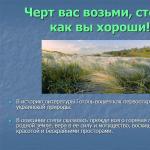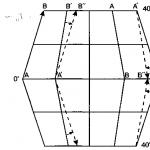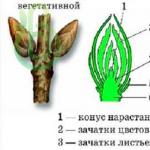All the most important branches of knowledge in the Byzantine Empire basically continued and developed the heritage of classical Greece of the Hellenistic and Roman period; this heritage was given a theological orientation or it was processed in accordance with Christian doctrine. The development of scientific theory, however, stopped: after all, the basis of ancient science was philosophy, which in the Middle Ages gave way to theology. Due to the fact that “the worldview of the Middle Ages was essentially theological”, and “church dogma was the starting point and basis of all thinking” 1, secular sciences usually took on a theological coloring in Byzantium, as elsewhere in the Middle Ages; information on natural science, geography, mathematics, history can often be found in theological writings. The peculiarity of the medieval sciences also consisted in the fact that rarely any of the thinkers (the same took place in antiquity) was limited to any one area of knowledge: the majority was engaged in science in the broad sense of the word; many wrote essays on philosophy, theology, mathematics, medicine - in a word, on a number of sciences that later differentiated 2.
The development of mathematical theory stopped in Greece long before the rise of the Eastern Roman Empire 3 . During the period under review, mathematics develops in accordance with practical needs. In addition, the study and commentary of ancient authors, especially Euclid and Archimedes, continued.
Mathematical calculations were widely used in astronomy, which was of paramount importance for navigation and in determining calendar dates, necessary, for example, for calculating taxation, as well as for church chronology. It was important for the chroniclers to determine the year of the "creation of the world", from which the entire secular and theological historical chronology was counted; in addition, the clergy needed to know the exact dates of the main events in the life of Christ (his birth, baptism, etc.), to which church services and holidays were timed. The most significant of the latter was the feast of Easter: in accordance with it, the days of celebrating many events of the church year were established. Special methods for calculating the time of this most revered holiday in the church calendar were quite complicated. They were associated with a serious mathematical processing of the results of astronomical observations.
A prominent mathematician of this period was Theon, father of the famous Hypatia, who commented on the mathematical writings of the ancients and taught in Alexandria. The Neoplatonist philosopher Proclus (5th century) compiled commentaries on the writings of ancient mathematicians. Domninus (5th century) wrote a treatise on arithmetic. Stephen of Alexandria, a professor at the University of Constantinople (first half of the 7th century), was educated in Alexandria and lectured on the philosophy of Plato and Aristotle, on arithmetic, geometry, astronomy, and music.
As for the practical application of mathematical knowledge, the most important thing here was the improvement of the astrolabe by Sinesius of Kirensky, who also compiled a special treatise on this most important instrument for navigators. Treatises on the design and use of the astrolabe were also written by the above-mentioned Stephen of Alexandria and the philosopher John Filonov (late 6th century), professor at the University of Constantinople. Finally, the names of two outstanding mathematicians of the 6th century should be mentioned. - Anthimius from Thrall and Isidore of Miletus, who practically applied their knowledge in the field of architecture in the construction of the church of St. Sophia in Constantinople; Anthimius was also prone to theoretical research, as evidenced by his work on incendiary mirrors, which has survived only in fragments.
In the eyes of the Byzantines, scholarly writings on geography were only descriptions of the earth compiled by ancient authors, such as Strabo. These writings were studied and commented on throughout Byzantine history. But for the practical needs of the state, church and trade, other kinds of works are also compiled, dedicated to the description of the land and contemporary countries and peoples of that era. A number of works belonged to merchants who described the countries they saw and collected information about the routes of communication.
In the middle of the IV century. An unknown Syrian compiled a "Complete Description of the World and Peoples", containing information about the countries and peoples of the East, about the most important centers of the empire for trade and economy. This work has survived only in Latin translation.
Elephant. Mosaic of Martyrius Seleucia. Antioch. 6th century
Among the Byzantine geographical and cosmographic treatises of the early period, a very special place is occupied by Kosmas Indikoplov's work "Christian topography" widely known throughout the Middle Ages 4 . This book, like the life of its author, is deeply controversial. Cosmas was born at the turn of the 5th-6th centuries. He spent his youth in business dealings. Cosmas could not get an extensive education, but he visited many countries. As an adult, he lived in Alexandria, and then, apparently, entered a monastery in Sinai, where he ended his days.
Along with interesting, reliable geographical and ethnographic data, 5 his "Christian topography" included cosmogonic and philosophical ideas about the universe, adapted to Christian doctrine. And here the brave merchant, the inquisitive traveler, the entertaining storyteller faded into the background: he gave way to a fanatical, ignorant, narrow-minded monk. In his "Christian Topography" Cosmas tries to refute the ancient cosmogony and replace it with the biblical concept of the universe. On the basis of the Bible and the works of the Church Fathers, Cosmas opposes the Christian cosmography to the Ptolemaic system. Considering the teachings of Ptolemy not only wrong, but harmful and dangerous. Cosmas argues that the Earth is by no means spherical, but is a flat quadrilateral, like Noah's Ark, surrounded by the ocean and covered by the vault of heaven, where "paradise" is located.
The philosophical and theological views of Cosmas were influenced by the theologian of the 4th-5th centuries. Theodore of Mopsuestia, as well as one of the scholars of the Nisibis Nestorian school of theology - Mar-Aba (Patricia). The main thing in the worldview of Cosmas is the doctrine of two states (χααστασεις). God seeks, according to Cosmas, to communicate his wisdom and his beneficent beings created by him, but the difference between the creator and the creation is so great that the direct spread of divine wisdom to the creation is impossible. Therefore, God creates two states: one is perishable and finite, full of contradictions and subject to trials, the other is eternal and perfect. Based on this teaching, Cosmas comes to a dualistic understanding of everything that exists. The universe is divided into two worlds - earthly and heavenly, and the history of mankind - into two periods: one beginning with Adam, the other - with Christ. Christ's victory over death creates a guarantee for humanity to achieve eternal bliss 6 . In Christological matters, the ideas of the author of "Christian Topography" are close to Nestorianism, the influence of which is felt quite strongly in his work.
The cosmographic and theological-philosophical views of Cosmas met with a decisive rebuff from the Alexandrian philosopher, a contemporary of Cosmas, Filopov, who defended the ancient views on the universe, dating back to Aristotle. The sharp controversy between Cosmas and Philopon largely reflects the philosophical and theological struggle in Alexandria in the 6th century.
It is also characteristic of that transitional epoch that Cosmas, with all his Christian fanaticism and hatred of Hellenic science, himself could not escape to a certain extent the influence of Aristotelian philosophy and the teachings of the Stoics 7 .
On the whole, the cosmographic representations of Cosmas were a step backwards in comparison with the Ptolemaic system and brought great harm to the development of the science of the universe. In the Middle Ages, the "Christian topography" of Cosmas largely slowed down the progress of the science of the universe. At the same time, it should be taken into account that the work of Cosmas was widespread not only in Byzantium, but also in the West, and in Ancient Russia. Cosmas' colorful stories about various countries of the world made his work an entertaining read. The popularity of "Christian topography" was largely facilitated by unusually interesting, sometimes highly artistic illustrations - miniatures and drawings that adorned it. Especially famous are the miniatures of the Vatican manuscript of Cosmas of the 9th century. eight .
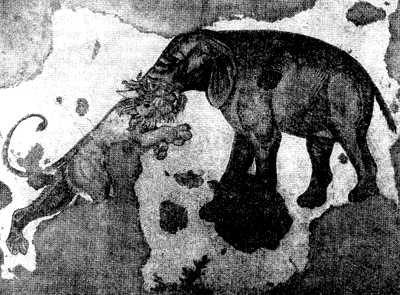
Elephant fight with lion. Mosaic that adorned the floor of the Grand Palace in Constantinople. Second half of the 6th century (?)
It is still debatable which drawings were in the original "Christian Topography" and whether they were drawn by Cosmas Indikoplus himself or by some other artist. In the text of his work, Kosma not only often mentions, but also explains the drawings. It seems likely that the image of the rhinoceros, the statues in the palace of the king of Aksum, and some other drawings belonged to the author himself. The drawings related to cosmography itself, apparently, are borrowed from Mar-Aba (Patricius). In any case, in the drawings of Cosmas (or another artist) one can feel the influence of the best examples of the artistic school of Alexandria - mosaics, frescoes, statues in the catacombs and basilicas; miniatures and drawings of "Christian Topography" by Cosmas occupy a prominent place in Byzantine art of the 6th century.
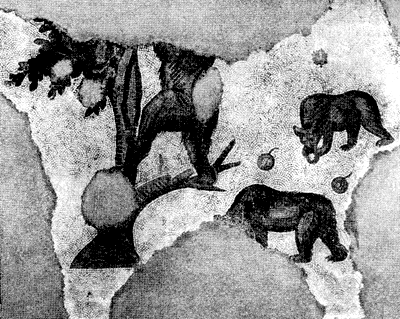
The Bears. Mosaic that adorned the floor of the Grand Palace in Constantinople. Second half of the 6th century (?)
In the VI century. Hierocles compiled a geographical survey of the Eastern Roman Empire called Συνεχδημος 9 ; it lists 64 provinces and 912 cities; this work was of great importance in the development of the political geography of the era. Some information of a geographical nature is found in historical works of the 4th-7th centuries. For example, the works of Procopius contain invaluable data on the geography of the empire and its adjacent lands, including Africa, Italy, Spain, distant England and Scandinavia, the Balkan Peninsula, the Caucasus, and many other countries and peoples.
In Byzantium of the period under consideration, a number of works on zoology and botany appeared. They either described the wonders of the animal world of distant countries (India), or contained information intended for practical needs related to agriculture. The earliest of these works was a treatise on the animals of India, written by Timothy of Gaz (V-VI centuries); this treatise, preserved only in fragments, is based on the works of ancient authors - Ctesias (IV-V centuries BC) and Arrian II century. n. e.). In the II century. n. e. an unknown author compiled a description of real-life and fantastic animals: it became widespread in the Middle Ages under the name "Physiologist"; later, in order to adapt this work to Christian ideology, comments were made, according to which each described animal was given a symbolic aspect, the properties of individual animals were compared with Christian virtues or, conversely, with human vices and sins condemned by Christian morality.
Botany in this period is known only practical. The only work on plants common in Byzantium was the treatise of the physician Dioscorides (II century), in which plants are described from the point of view of their use in medicine. The manuscripts of this treatise are of particular interest, as they are usually provided with realistic representations of plants.
Descriptions of individual animals and plants are also found in some works of geographical content, for example, in the work of Kosma Indikoplova or the author of the 5th century. Philostorgius, who wrote about the island of Ceylon. Theological writings - "six days" - were also popular. They got their name from the biblical tradition about the creation of the world by God in six days. The best known are the six-day books compiled by Bishops Basil of Caesarea and Gregory of Nyssa. The goal of the authors of these works was to harmonize the natural-scientific ideas of antiquity with the Christian religion. To do this, it was necessary to emphasize the expediency of the world, supposedly created according to the creator's plan. But, despite the teleological orientation of the six days, they contain information about the animal and plant world, based on the centuries-old experience of previous generations, on observations of wildlife. However, this information, in all likelihood, was drawn by the authors from the writings of more ancient writers, and was not the result of their own observations 9a.
Chemistry in the IV-VII centuries. developed most fruitfully in its practical application - therefore, to study its history, the recipes used by artisans in the production process are important. Unfortunately, there are almost no records of such recipes in Greek. Only recipes for some dyes and medicines are known. Syrian sources mention the existence of special manuals used by artisans 10 . The theory of chemistry developed within the framework of alchemy, which was considered a secret, sacred science of the transmutation of metals in order to produce and increase the volume of silver and gold, as well as the philosopher's stone - a miraculous remedy that supposedly was supposed to turn other metals into gold, would serve as a panacea for all diseases contributed to life extension. There is no doubt that special signs were known in early Byzantium for the designation of chemical substances; these signs did not have a magical character, but replaced the chemical formulas of our time 11 .
The most remarkable achievement of practical chemistry at that time was the invention of Greek fire, which for a long time gave Byzantium an advantage in naval battles. Greek fire was proposed in Constantinople by the Syrian architect Callinnicus in 678; this composition included oil mixed with asphalt, resins and other combustible substances, as well as with quicklime; the mixture ignited on contact with water and was successfully used against enemy ships; True, the Arabs soon learned to protect their ships from Greek fire by covering them up to the waterline with lead sheets 12 .
In the IV century. a certain Synesius from Alexandria compiled a commentary on the alchemical treatise of Pseudo-Democritus (III century). The previously mentioned Stephen of Alexandria, among his other works, is credited with the treatise On the Production of Gold. Stephen of Alexandria enjoys the fame of the creator of alchemy. Four alchemist poets adjoin him - Iliodor, Theophrastus, Hierotheus, Archelaus, who repeated his treatises in their works. Separate alchemical works were also attributed to the emperors Justinian I and Heraclius.
The basis of medical knowledge throughout the existence of the Byzantine Empire was the writings of two great physicians of antiquity: Hippocrates (c. 460-377 BC) and Galen (131-201). Extracts from the writings of these two ancient authors were included in newly compiled compilations and have been preserved in many lists 13 .
In Hellenistic times, the Alexandrian medical school enjoyed the greatest fame, retaining its former glory until the 7th century. Particular attention was paid in Alexandria to the study of anatomy, and certain successes were achieved in this area. Christianity delayed the further development of anatomy, since the church forbade the autopsy of human corpses. The doctors of Antioch were renowned as physicians.
In the IV-VII centuries. a fairly large number of medical manuals were compiled, of which we will name the most remarkable. By the 4th century includes the activities of the doctor Orivasius (325-403), a friend of the emperor Julian the Apostate; under the title "Medical Manuals" (Συναγωγαι ιατριχαι) Orivasius compiled a collection of excerpts from the best medical writings of antiquity.
In the VI century. the doctor Aetius of Amida, who studied in Alexandria, wrote a guide to medicine (in 16 books). Aetius is the first Byzantine Christian doctor, as there are direct indications in his book. So, according to this doctor, in order to remove foreign objects from the throat or larynx, it is recommended to turn to the help of St. Vlasia; some recipes mention incense made in the church.
In the first half of the 7th c. Doctor John of Alexandria and Stephen of Alexandria wrote comments on Hippocrates and Galen. In Alexandria, Paul of Eginsky (625-690), who compiled a manual on surgery, also received a medical education. All of these works are of a compilation nature, the authors only added to the achievements of ancient medicine some observations concerning the symptoms of diseases and pharmacology.
The prohibition by Justinian of any critical study of the texts included in the Corpus juris civilis, at first, to a certain extent, slowed down the development of jurisprudence, the scientific creativity of lawyers. However, already under Justinian, prohibitions were circumvented in every possible way. In the schools of law, intensive work was carried out to translate the code of laws into Greek in order to make the code accessible to the majority of the population of the Byzantine Empire.
The creation of Justinian's Code of Laws spawned a large scholarly literature. It includes Greek translations of certain parts of the Corpus juris civilis, abbreviated extracts (επιτομη, συντομος)H3 of Justinian's legislation, various interpretations and paraphrases, dictionaries explaining Latin terms found in legislative prescriptions, essays on particular issues of law. The most outstanding works of lawyers of the second half of the VI century. were associated with commenting on the Digest, the study of which gave a particularly fruitful impetus to legal thought. Already the compilers of the Digest - professors of law Theophilus and Dorotheus - under the guise of compiling Greek indices and paraphrases, began to actually comment on the Digest. Soon after them, during the life of Justinian, another professor of law - Stefan, also under the guise of compiling an index, wrote an extensive Greek commentary on the Digests, based on his lectures and containing many excerpts from the works of other jurists, in particular Theophilus. A Greek paraphrase of the Institutions written by Theophilus, and Greek commentaries on the Justinian Code compiled in the 6th century. Falaley, Isidore and Anatoly, became widely known in the empire and beyond. Between 570-612 work was done on commenting on the Digest and their scientific study; it is known from the scholia to Basilica as the work of Anonymus. And although with the creation of Corpus juris civilis, legal thought in Byzantium for many centuries closed in the circle of studying this grandiose monument, nevertheless, scientific creativity in the field of jurisprudence did not stop: the development of law as a science continued in subsequent centuries 14.
The most important feature of the Byzantine education of the period under review should be considered the gradual replacement of the system of pagan education inherited from the Hellenistic period with a new system created under the auspices of the church in the interests of the monarchy. While trying to eradicate pagan education and replace it with Christian education, the church at the same time borrows the methodology that has developed over hundreds of years in ancient and Hellenistic Greece. Many church leaders of the IV-V centuries. studied in pagan schools. Thus, the "fathers of the church" Basil of Caesarea and Gregory, bishop of the city of Nazianzus (c. 330-389), were educated in a pagan school in Athens and subsequently actively fought against the prejudice of Christians against ancient Greek literature; Basil of Caesarea owns an essay where, with the help of numerous quotations, it is proved that ancient literature in many respects anticipated Christianity and prepared minds for its perception. The Christian Byzantines were proud of the fact that they keep the cultural heritage of Hellas, and unlike the barbarians, they called themselves "Romans". In this sense, relying largely on the old classical traditions, the Byzantine Church played a certain positive role. The first Christian schools appeared during the years of persecution of Christianity; but at that time they could only compete with the pagan schools. In the IV century. an active offensive of the Christian church against pagan schools begins.
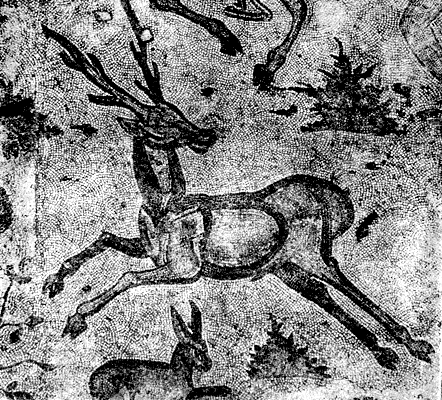
Animals. Mosaic from the hunting house. Antioch. Uster Museum 6th century
Primary education consisted of the study of spelling, the basics of arithmetic and grammar, which meant familiarization with the works of classical authors, primarily Homer's Odyssey and Iliad. Over time, along with Homer, they began to read the books of the Old and New Testaments, and especially carefully studied the Psalter, which for many centuries served as the first book to be read not only in Byzantium, but also in Russia.
The general primary stage of education was followed by studies in higher education 15 . The secular sciences studied in higher education according to the system proposed by Plato (in his "Republic") were divided into two groups, namely: 1) "trivium", which included grammar, rhetoric and dialectics, and 2) "quadrivium", consisting of arithmetic, music, geometry and astronomy. However, the range of Byzantine scientific studies was not limited to the branches of knowledge included in these cycles. In addition to them, they studied law, medicine, and theology.
Higher educational institutions were controlled by the imperial power. There were also private schools. According to traditions, teaching was conducted orally, the lesson was improvised by the teacher. Approximately until the 5th century. n. e. the method of reading aloud the studied text, adopted in ancient Greece, was also preserved. Only in the 5th century, in connection with the spread of monasticism, which considered silence one of the highest Christian virtues, did they begin to read silently 16 . The most important teaching method was the exegetical method, i.e., interpretation, commenting on the works chosen for study. In addition to Homer's poems, during the passage of the "trivium" they studied in extracts the works of tragedians - Aeschylus, Sophocles, Euripides, historians - Herodotus and Thucydides, orators - Isocrates and Lysias. During the passage of the "quadrivium" the works of mathematicians - Archimedes, Euclid, physicians - Hippocrates and Galen were interpreted. Individual words or passages of the studied text were subject to interpretation. Exegetical literature was so widespread in Byzantium precisely because it corresponded to the main method of teaching. Quite often, students wrote down in the classroom behind the teacher his interpretation of απο φωνης (with voice), and then distributed them in lists.
Christian theological schools, of course, borrowed this technique and applied it to the study of the books of the Old and New Testaments, the works of the “Church Fathers”. Many works of medieval writing, commenting on the writings of ancient authors, the Bible, theological treatises, monuments of civil and canon law, arose precisely as lecture courses.
Legal education 17 played a special role, since lawyers were very much needed in the state apparatus. Law was one of the main subjects of teaching in the Athens, Alexandria and Beirut schools. The most celebrated of these was the Beirut school, which reached its highest prosperity in the fifth century. The basis of teaching in higher schools of law was the study of the texts of lawyers of the classical era. Criminal law and legal proceedings were not studied. The method of teaching was wholly exegetical and suffered from confusion and incompleteness. As a result of training, students did not receive any practical skills. Meanwhile, the need for knowledgeable practicing lawyers in the empire was very significant, legal education was also required for public service. The need for a reform of legal education became especially urgent after the completion of work on the codification of law under Justinian. This reform consisted of a categorical prohibition to study anything other than the Corpus juris civilis. It is the new, codified law that has now become the only subject of study.
In the Constantinople and Beirut schools, 4 positions of professors of law were established. Instead of a four-year course, a five-year course of study was introduced. During all the years of their stay in higher education, students studied only the Institutions, the Digests and the Code of Justinian. On the basis of the new program, 1st year students passed the Institutions and the first four books of the Digest. Justinian, as a sign of special favor, canceled the old humiliating name for first-year students - "insignificant" (dupondii) and replaced it with a more pleasant one - Justiniani novi. The second, third and fourth years of study were entirely devoted to the assimilation of the Digest. In the fifth year, students studied the Code of Justinian; they received the honorary title of prolytae - "exempted" from listening to lectures. During the reign of Justinian, the professors of law Theophilus, Anatoly, Falaley from Constantinople, Dorotheus and Isidore from Beirut, and John Scholasticus from Antioch acquired great celebrity. They not only participated in the codification of law, but were widely engaged in pedagogical activities.
The reform of the teaching of law under Justinian seems to have produced some positive results. Not only did the range of legal issues studied by students expand, but teaching became more specific and approached the needs of legal practice. Since the Corpus juris civilis became the only valid law, it is natural that for an educated judge or lawyer in his practical activities, first of all, it was necessary to master this particular Code of Laws well.
There is almost no direct evidence of the teaching of history as an independent discipline in Byzantine educational institutions. Only Theophylact Simocatta, in the preface to his famous work, puts history on a par with philosophy in a single series of sciences and indicates that history was taught at the University of Constantinople. The study of history in educational institutions can also be judged on the basis of numerous brief historical compendia preserved in many medieval manuscripts; such compendiums, apparently, served as teaching aids.
Under the influence of Christianity, not only the view on the purpose of history 18 changed, but also the content of historical writings. The study of history was based on the Bible; to the material gleaned from the Bible, Christian authors, who considered themselves at the same time the heirs of ancient Hellas, added myths, transcriptions of Homer's poems, and retellings of the works of ancient tragedians. The presentation of history in accordance with the requirements of the church also entailed the inclusion in the historical writings of information about all the peoples known at that time, it assumed the consideration of the fate of all mankind from the mythical creation of Adam.
Historical knowledge was disseminated in Byzantium not only in historical writings proper or in chronicles. Commentaries on the poems of Homer, on the Bible and other works studied by the Byzantines, contained a lot of historical information, the names of real and mythical personalities who were perceived as really living. One of the most important and most common methods of commenting on biblical texts was to compare the traditions (or sayings) of the Old Testament with the events mentioned in the New Testament.
The study of the past of Hellas and the comparison of the Old Testament history with the New Testament contributed to the spread of the view of the historical process as the progressive movement of society.
The development of the philological sciences was closely connected with the needs of education, and took place mainly in the process of studying and commenting on the works of ancient literature, and later also on the works of early Christian literature.
The concept of "philology" did not exist in Byzantium. Grammar meant not only grammar in the modern sense of the word, but also lexicography and metrics. There were special grammatical treatises. The most significant of these were written by George Khirovosk, who lectured on grammar at the University of Constantinople at the end of the 6th or the beginning of the 7th century. Lectures by Hirovoska commenting on the works of the grammarians Theodosius of Alexandria and Dionysius of Thrace (both lived around 100 BC) have been preserved; Hirovosk also owns a treatise on prosody and a spelling guide.
The influence of Hirovosk on subsequent Byzantine grammarians was insignificant until the 15th century, when the learned Greek Constantine Laskaris, who moved to Italy, used his writings in compiling the grammar of the Greek language.
In addition, the grammatical writings of John Philipon and his historical and grammatical scholia to the Bible are known.
The lexicography of the period under review has not yet become such an important branch of knowledge as in subsequent centuries. In this area, the most interesting are bilingual dictionaries (Greek-Latin, Latin-Greek, Coptic-Greek), the compilation of which was caused by the needs of the vast international relations of the empire.
It is also necessary to note the dictionary attributed in the manuscripts to Patriarch Kirill of Alexandria; This dictionary was compiled in the 5th century. - or at the beginning of the VI century. on the basis of old, insignificant rhetorical dictionaries; throughout the Byzantine era, Cyril's dictionary played a huge role in school work and served as an indispensable tool in the processing and compilation of new lexical aids.
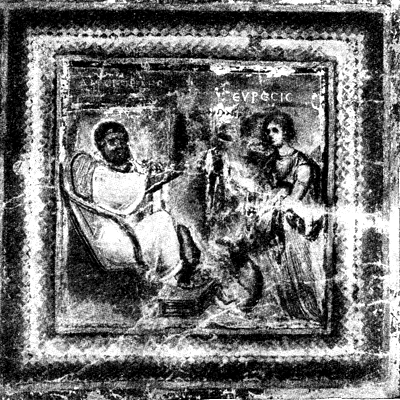
Dioscorides revealing the magical power of the mandrake root. Miniature from Dioscorides in the Vienna National Library. Early 6th century
During the IV-V centuries. on the territory of the Eastern Roman Empire, the pagan centers of education that arose in previous centuries were preserved. Christian schools appear for the most part in such cities as Alexandria, Athens, Beirut, Constantinople, that is, in the ancient centers of education. As an interesting detail, we note that there was an exchange of scientists between prominent centers; there is even information about what took place in the VI century. "congress" of scientists, at which the philosophers of Athens and Thebes met with the philosophers of Constantinople 19 .
In the first centuries of the existence of the Eastern Roman Empire, the old universities of Athens and Alexandria, which arose in the ancient or Hellenistic era, still retained their former glory. The role of these universities in the period under review consisted not so much in the creative development of science, but in the preservation of the scientific heritage of the past, in the transfer of the culture of pagan Greece and Rome to a new generation, already brought up in the spirit of Christian doctrine. Athens, a city remote from the areas where the Christian religion arose, remained the last stronghold of paganism - in contrast to Alexandria, where theological schools appeared very early. In Alexandria already in the II century. there is a so-called Alexandrian trend in theology. As the mental center of the empire, this city appears later than Athens. Perhaps it was for this reason that the University of Athens was closed by Justinian in 529, while the University of Alexandria turned out to be more viable and existed until the middle of the 7th century, when the city was occupied by the Arabs. The study of philosophy dominated the University of Athens. In Alexandria, in the 4th and 5th centuries, as before, not only pagan poetry and philosophy flourished, but also mathematics, astronomy, medicine and theology.
Gradually, both the best academic forces and the young students moved to Constantinople, the metropolitan university, which enjoyed special privileges even by the 6th century. ranked first among other educational institutions of the empire.
The university in Constantinople was organized around 425 by the decree of Theodosius II. The university was designed to train not only scientists, but also government officials. Among the university professors, the most famous are Georgy Hirovosk and Stefan of Alexandria. Both bore the title of "universal teachers".
The center of legal education was in Beirut 20 until 551, when the city was destroyed by an earthquake. The Beirut School of Law was founded at the end of the 2nd century BC. or at the beginning of the third century. Teaching in it was conducted in Latin, only at the end of the 5th century. Greek is introduced into the school. The so-called Sinai scholia have been preserved, which are interpretations of Beirut professors on some monuments of Roman law.
One of the first medieval universities was the university in the Syrian city of Nisibis, 21 founded at the end of the 5th century. Many teachers from the Edessa school, closed in 489, moved to the Nisibis High School. The statute of the Nishi school, which is the oldest statute of a medieval university known to us, has been preserved in several editions.
In addition to the centers of education mentioned above, there was also a high school in Edessa, a school of rhetoricians and sophists in Gaza, a medical school in Nisibis, a Christian school in Caesarea, founded by Origen in the Syrian city of Amid. Already by the beginning of the 4th century, there was undoubtedly a theological school in Antioch, but information about it is extremely scarce. In any case, there is every reason to assume that the educational work here was well organized: a whole theological and exegetical trend was called the Antioch School.
Statement of education in the Byzantine Empire IV-VII centuries. was at one time widely known in the world and, apparently, was considered exemplary. This can be judged on the basis of the words of Cassiodorus, the most enlightened person and the most important statesman of the Ostrogothic kingdom: in 535 he intended to open a school in Rome, similar to the schools in Alexandria and Nisibis. This plan was not carried out, but later, at the monastery founded by Cassiodorus under the name "Vivarium", among the teaching aids, a textbook compiled in Nisibis and translated from Syriac into Latin was used.
For the successful development of science in any era, books and book depositories are necessary; book depositories in the Middle Ages were closely associated with writing workshops - scriptoria, since books were acquired mainly through their correspondence. As a writing material in the IV-VII centuries. papyrus and parchment were used. In the sands of Egypt, many fragments of papyrus books, both secular and religious, have been preserved, representing the remains of private libraries. Among the surviving parchment manuscripts of this time, liturgical texts predominate. All higher educational institutions, monasteries and churches had their own libraries. Of the libraries that arose in Byzantium in the 4th-7th centuries, only one has survived to this day - the library of the monastery of St. Catherine at Sinai, and even in that one there are manuscripts of a later time. However, it is known that the books were already in Diocletian's palace in Nicomedia. When Constantine later moved the capital to the shores of the Bosporus, a library was set up in the portico of the imperial palace, consisting of almost seven thousand books.
By decree of Emperor Valens in 372, four Greek and three Latin scribes were appointed to copy manuscripts for the imperial library; it contained 120,000 volumes. Among other books in the imperial palace were kept lists of Homer's poems, written on snake skin in gold letters. All these riches burned down during a fire in 476.
Up to the VI century. there was the famous Library of Alexandria, the largest and best organized library of the Hellenistic era. There were also private book depositories, for example, the library of Bishop George of Alexandria, who was killed in 361, which contained books on philosophy, rhetoric, history and theology, or the library of the scientist Tychicus - mathematical and astrological works predominated in it. Despite the fragmentary information of the sources, it can be reasonably assumed that the book wealth, both in the capital of the empire and in the provincial cities, was significant; this consideration is confirmed by numerous finds of papyri of literary content.
In the IV century. the most common writing material of antiquity - papyrus - was replaced by parchment, in connection with which the form of the book also changed. For a long time, before the rejection of Egypt by the Arabs in the 7th century, papyrus was used for writing documents, letters, and for educational records. But the book in the form of a papyrus scroll gives way to the parchment code already in the 4th century. Unfortunately, the manuscripts of the IV-VII centuries. little has been preserved.
Of the manuscripts of this period that have survived to this day, the most noteworthy are the Vatican and Sinaiticus codes of the Bible, as well as the Vienna copy of Dioscorides. The Vatican (named after the place of storage) and the Sinai (named after the place where it was kept until the middle of the 19th century) codes date back to the middle of the 4th century. Both manuscripts are written in uncial script on parchment.
In his Vita Constantini, Eusebius reports that the emperor Constantine in 331 ordered the production of 50 copies of the Bible, necessary for the celebration of worship in the newly built churches. Of these 50 lists, only two have survived - namely the Vatican and Sinaiticus codes. The list of Dioscorides, kept in Vienna, dates back to about 512. This list is written in uncial writing and is provided with beautiful miniatures, which depict the plants described in the text. There are also several luxurious lists of the Gospel, written on purple parchment in gold and silver and decorated with miniatures; these lists also date back to the 6th century. Manuscripts of the 7th century little is known, and among them almost no complete codex has been preserved.

